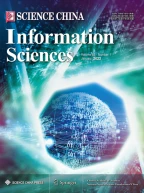Abstract
In this paper, we propose a coherence of measurement matrix-based baseline distribution optimization criterion, together with an L 1 regularization missing data completion method for unobserved baselines (not belonging to the actual baseline distribution), to facilitate wavelet-based compressive sensingtomographic synthetic aperture radar imaging (CS-TomoSAR) in forested areas. Using M actual baselines, we first estimate the optimal baseline distribution with N baselines (N > M), including N − M unobserved baselines, via the proposed coherence criterion. We then use the geometric relationship between the actual and unobserved baseline distributions to reconstruct the transformation matrix by solving an L 1 regularization problem, and calculate the unobserved baseline data using the measurements of actual baselines and the estimated transformation matrix. Finally, we exploit the wavelet-based CS technique to reconstruct the elevation via the completed data of N baselines. Compared to results obtained using only the data of actual baselines, the recovered image based on the dataset obtained by our proposed method shows higher elevation recovery accuracy and better super-resolution ability. Experimental results based on simulated and real data validated the effectiveness of the proposed method.
Similar content being viewed by others
References
Reigber A, Moreira A. First demonstration of airborne SAR tomography using multibaseline L-band data. IEEE Trans Geosci Remote Sens, 2000, 38: 2142–2152
Fornaro G, Serafino F, Lombardini F. Three-dimensional multipass SAR focusing: experiments with long-term spaceborne data. IEEE Trans Geosci Remote Sens, 2005, 43: 702–714
Zhu X, Bamler R. Tomographic SAR inversion by L 1-norm regularization-the compressive sensing approach. IEEE Trans Geosci Remote Sens, 2010, 48: 3839–3846
Bi H, Zhang B C, Hong W. Matrix completion-based distributed compressive sensing for polarimetric SAR tomography. Sci China Inf Sci, 2015, 58: 119301
Nannini M, Scheiber R, Moreira A. Estimation of the minimum number of tracks for SAR tomography. IEEE Trans Geosci Remote Sens, 2009, 47: 531–543
Bi H, Zhang B, Hong W. L q regularization-based unobserved baselines’ data estimation method for tomographic synthetica aperture radar inversion. J Appl Remote Sens, 2016, 10: 035014
Donoho D. Compressed sensing. IEEE Trans Inf Theory, 2006, 52: 1289–1306
Candès E, Romberg J, Tao T. Stable signal recovery from incomplete and inaccurate measurements. Commun Pure Appl Math, 2006, 59: 1207–1223
Nyquist H. Certain topics in telegraph transmission theory. Trans Am Inst Electr Eng, 1928, 47: 617–644
Shannon C. Communication in the presence of noise. Proc Inst Radio Eng, 1949, 37: 10–21
Zhu X, Bamler R. Very high resolution SAR tomography via compressive sensing. In: Proceedings of Fringe 2009, Frascati, 2009. 1–7
Budillon A, Evangelista A, Schirinzi G. SAR tomography from sparse samples. In: Proceedings of IEEE International Geoscience and Remote Sensing Symposium (IGARSS), Cape Town, 2009. 865–868
Aguilera E, Nannini M, Reigber A. Wavelet-based compressed sensing for SAR tomography of forested areas. IEEE Trans Geosci Remote Sens, 2013, 51: 5283–5295
Candès E, Tao T. Near-optimal signal recovery from random projections: universal encoding strategies. IEEE Trans Inf Theory, 2006, 52: 5406–5425
Tropp J. Greed is good: alogrithmic results for sparse approximation. IEEE Trans Inf Theory, 2004, 50: 2231–2242
Bi H, Jiang C, Zhang B, et al. Track distribution optimization for tomographic synthetic aperture radar imaging. J Sys Eng Electron, 2015, 37: 1787–1792
Granville V, Krivanek M, Rasson P. Simulated annealing: a proof of convergence. IEEE Trans Pattern Anal Mach Intell, 1994, 16: 652–656
Acknowledgements
This work was supported by Chinese Academy of Sciences/State Administration of Foreign Experts Affairs International Partnership Program Creative Research Team and National Natural Science Foundation of China (Grant No. 61571419). The authors would like to thank Dragon 3 Project (ID10609) and Prof. Erxue Chen and Prof. Stefano Tebaldini for providing the Biomass dataset.
Author information
Authors and Affiliations
Corresponding author
Additional information
Conflict of interest The authors declare that they have no conflict of interest.
Rights and permissions
About this article
Cite this article
Bi, H., Liu, J., Zhang, B. et al. Baseline distribution optimization and missing data completion in wavelet-based CS-TomoSAR. Sci. China Inf. Sci. 61, 042302 (2018). https://doi.org/10.1007/s11432-016-9068-y
Received:
Revised:
Accepted:
Published:
DOI: https://doi.org/10.1007/s11432-016-9068-y
